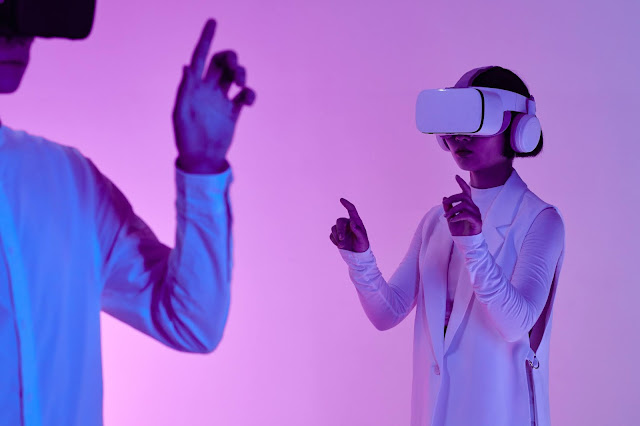Artificial Intelligence interfaces for people with disabilities.
Researchers at the USC Viterbi School of Engineering are utilizing generative adversarial networks (GANs) - innovation most popular for making deepfake recordings and photorealistic human countenances - to further develop brain-computer interfaces for individuals with disabilities.
In a paper
distributed in Nature Biomedical
Engineering, the group effectively
helped an AI to create manufactured mind action information. The information,
explicitly neural signs called spike trains, can be taken care of into AI
calculations to work on the ease of use of brain-computer interfaces (BCI).
BCI frameworks work
by breaking down an individual's cerebrum flags and making an interpretation of
that neural action into orders, permitting the client to control advanced
gadgets like PC cursors utilizing just their considerations. These gadgets can
work on personal satisfaction for individuals with engine brokenness or loss of
motion, even those battling with the secured disorder - when an individual is
completely cognizant however unfit to move or convey.
Different types of
BCI are now accessible, from covers that action mind signs to gadgets embedded
in cerebrum tissues. New use cases are being recognized constantly, from
neurorehabilitation to treating wretchedness. However, despite the entirety of
this guarantee, it has demonstrated testing to make these frameworks quick and
hearty enough for this present reality.
In particular, to
sort out their bits of feedbacks, BCIs need gigantic measures of neural
information and significant stretches of preparing, adjustment and learning.
"Getting
sufficient information for the calculations that power BCIs can be troublesome,
costly, or even outlandish whenever incapacitated people can't create
adequately hearty mind signals," said Laurent Itti, a software engineering
educator and study co-creator.
Another deterrent:
the innovation is client explicit and must be prepared without any preparation
for every individual.
Imagine a scenario in
which, all things considered, you could make manufactured neurological
information - falsely PC produced information - that could "remain
in" for information got from this present reality.
Lead creator Shixian
Wen, a PhD understudy exhorted by Itti, contemplated whether GANs could
likewise make preparing information for BCIs by creating manufactured
neurological information undefined from the genuine article.
In an analysis
portrayed in the paper, the specialists prepared a profound learning spike
synthesizer with one meeting of information recorded from a monkey going after
an article. Then, at that point, they utilized the synthesizer to create a lot
of comparable - but phoney - neural information.
The group then, at
that point, consolidated the orchestrated information with modest quantities of
new genuine information - either from a similar monkey on an alternate day, or
from an alternate monkey - to prepare a BCI. This methodology got the framework
fully operational a lot quicker than current standard techniques. Truth be
told, the analysts found that GAN-integrated neural information further
developed a BCI's general preparing speed up to multiple times.
"Not exactly
brief of genuine information joined with the engineered information functions
just like 20 minutes of genuine information," said Wen.
"It is whenever we've first seen AI produce the formula for thought or development through the formation of manufactured spike trains. This examination is a basic advance towards making BCIs more reasonable for genuine use."
Moreover, after
preparing for one trial meeting, the framework quickly adjusted to new
meetings, or subjects, utilizing restricted extra neural information.
"That is the huge advancement here - making counterfeit spike prepares that look actually like they come from this individual as they envision doing various movements, then, at that point, likewise utilizing this information to help with learning on the following individual," said Itti.
Past BCIs,
GAN-created manufactured information could prompt leap forwards in different
information-hungry spaces of man-made brainpower by accelerating preparation
and further developing execution.
"At the point
when an organization is prepared to begin commercializing a mechanical
skeleton, automated arm or discourse union framework, they should check out
this strategy, since it may assist them with speeding up the preparation and
retraining," said Itti. "Concerning utilizing GAN to further develop
mind PC interfaces, I think this is just the start."
The paper was
co-composed by Tommaso Furlanello, a USC PhD graduate; Allen Yin of Facebook;
M.G. Perich of the University of Geneva and L.E. Mill operator of Northwestern
University.
Source: https://www.sciencedaily.com/releases/2021/11/211118203621.htm


Comments
Post a Comment